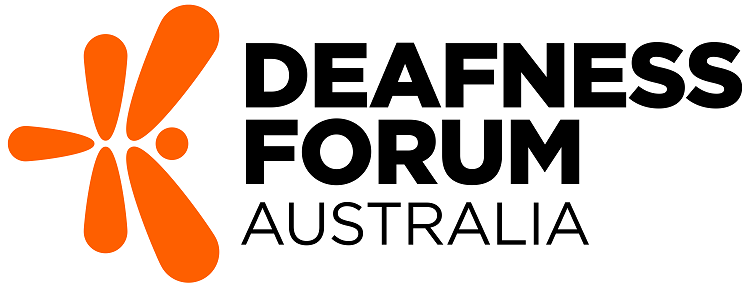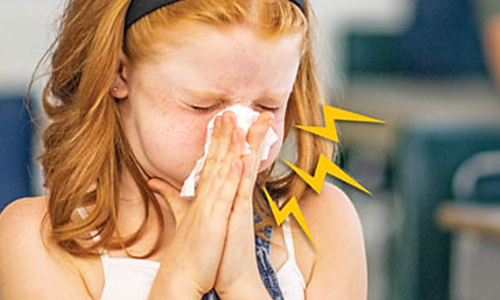With guidance from paediatric audiologists, in collaboration with school-based professionals, children with sound sensitivity can resume productive lives, uninterrupted.
By the time parents of children with a decreased sound tolerance disorder reach a paediatric audiologist, they may be at their wits’ end. Their child goes to the nurse’s office several times a day because the classroom noise hurts their ears. Or their child hides in the bathroom during classes to escape sounds that may seem innocuous to peers, but trigger discomfort and negative emotions in their child.
Alternatively, their child fears that they might hear certain sounds, so they bolt from the classroom, even though they tolerate other loud sounds without difficulty.
A child’s sound tolerance problem is stressful for the whole family. Attending a sports event or a parade, or even just going to the grocery store, can be wildly unsuccessful, with public meltdowns and parental anxiety about the child’s discomfort.
When decreased sound tolerance disorder issues emerge, families are likely to seek help first from the child’s paediatrician or their physician. If the sensitivity issue occurs mostly at school, the child’s teachers may flag it and involve the child’s family. Either way, a child’s abnormal responses to sound usually prompt a referral to audiology. However, audiologists who receive these complex cases may have limited time for taking an extensive case history and evaluating these children. Audiologists may not necessarily feel equipped to diagnose them and make recommendations for management.
How can we help these children succeed after a diagnosis?
Prepping the audiologist
Faced with these challenges, in 2020 our audiology program at Boston Children’s Hospital developed a program for tinnitus and decreased sound tolerance disorder issues. First, we coordinated specialised training for a subset of the audiology staff, including a tinnitus retraining therapy course and a tinnitus management course. We created a new 90-minute visit type called ‘TinnEval’, short for ‘Tinnitus Evaluation’. It was used for any presenting complaint of tinnitus or decreased sound tolerance disorder; and a decision tree for our schedulers to book these patients for the correct type of visit and provider.
Putting a TinnEval appointment in the schedule prompts our system to send an electronic questionnaire to the family to fill out before the appointment. Once complete, it is uploaded to
the patient’s medical record. This way, information about which sounds create a problem, the child’s reaction to those sounds, related health history, education setting, and, if applicable, education plan are available for the audiologist’s pre-appointment review. This reduces time typically spent taking an extensive case history, giving the audiologist a head start on planning diagnostic tests and developing recommendations for management.
Distinct, yet overlapping
Our audiologists typically identify three types of decreased sound tolerance disorders. Each has unique characteristics and requires a different management approach. At the same time, these disorders activate similar parts of the brain when the child reacts to sound.
Hyperacusis is a condition in which, across many settings, multiple commonplace sounds of low or moderate intensity are perceived as excessively and uncomfortably loud, or cause pain. Hyperacusis may not be worrisome in a 3- or 4-year-old who blocks their ears in a crowd, for example, as they will likely grow out of this reaction. But when these behaviours continue or present at older ages, or when they persist into kindergarten, the child and family will need help with management.
Phonophobia is a condition in which problem sounds provoke an immediate reaction of fear and anxiety. Children with phonophobia actively avoid the feared sounds, and even stay away from situations in which those sounds might occur. The fear and anxiety the child experiences are not proportional to the actual danger posed, and their reaction is more than would be expected for the child’s developmental levels (see sources). Phonophobia is best addressed with cognitive behavioural therapy intervention.
Misophonia is a neurobehavioral disorder that causes nervous system arousal (fight-or-flight response) and negative emotional reactions when the person hears certain sounds. Reactions often involve annoyance or irritation, verbal aggression, and avoidance behaviour. Misophonia is a spectrum disorder that can be mildly or severely disruptive to the child. The severity level may be related to other factors such as anxiety conditions, depression, or neurodevelopmental disorders. Most commonly, trigger sounds are associated with noises made by other people when eating and breathing, including chomping, crunching, slurping, bubble gum chewing, lip smacking, sniffing, throat clearing, and snoring. Another problem source is repetitive mechanical noises, such as keyboard tapping, clock ticking, foot tapping, and tap dripping, among others. As evidence-based treatments for misophonia do not yet exist, management centres on developing coping skills. Recommendations for the child include educational accommodations to reduce disruption of the child’s school day, behavioural health therapy to develop skills to improve response patterns to triggers, and layering of sound through ear-level sound generators or other sources to reduce the audibility of trigger sounds.
Sophia’s sound sensitivity
To illustrate the kind of sound sensitivity case we typically see in our clinic, we share the hypothetical case of 9-year-old Sophia*, who attended a private school in the Boston area. Confident and relaxed, Sophia knew all her classmates and found comfort in her daily routine at home and at school. With her older siblings off at college, her home environment was mostly quiet, except for when she practiced cello or her dance routines to music.
However, as Sophia and her parents walked the hallways on back-to-school day, a rambunctious new student crept up behind her and screamed suddenly and loudly. The piercing noise out of nowhere startled and frightened Sophia. Visibly wary of this student, she became hypervigilant. She tensed up when she heard the student speaking in an adjacent classroom and was unable to focus on classroom instruction or her schoolwork.
Even outside of school, sounds that previously weren’t bothersome now seemed painfully loud. The leaf blower in her neighbourhood made her run into the house. The bus’s squeaking brakes made her cry. She tried to practice cello, but the high notes caused her pain. She could not listen to her dance music. Her alarmed parents tried to help by giving her a set of ear-defenders to wear when she went outside the house. But Sophia had become so noise-averse that she refused to attend school. Her parents had no choice but to keep her home for several weeks as they searched for solutions.
Diagnosis and treatment
Sophia and her family contacted our program after consulting with an otolaryngologist and receiving a referral. Her audiological results, including distortion product otoacoustic emissions, were normal bilaterally. However, due to Sophia’s discomfort, we did not attempt middle ear muscle reflexes and loudness discomfort levels. She would not allow word-recognition testing at any intensity above 35 dB HL. Sophia showed discomfort and pain associated with everyday sounds of low or moderate intensity that would not bother others. This history and her behaviour during audiological testing were consistent with a diagnosis of hyperacusis. We also diagnosed phonophobia because she became stressed when she thought about the other student and the sounds they might make; hearing any sounds from that student caused immediate fear.
We started our audiology intervention, administered across four total appointments with counselling on hyperacusis and phonophobia. We next moved to accessible tinnitus retraining therapy-based counselling for Sophia and her parents. We also recommended sound therapy for Sophia, consisting of pleasant, steady, non-intrusive neutral sound played at school and at home, including at bedtime and through the night. Although we fit some children with ear-level sound-generator devices, a tabletop sound source was appropriate for Sophia.
We rounded out her treatment with interdisciplinary support, referring her to a psychologist for cognitive-behavioural therapy. A referral to an occupational therapist to give her tools for physiological self-regulation.
We advised the family to reduce Sophia’s avoidance of sounds via earmuffs or staying home, and to provide her with a sound-enriched environment (such as constant sound therapy, opening windows for environmental sounds, music, avoiding quiet). Sophia is showing steadily increasing tolerance for her auditory environment at school and outside of school.
School collaboration
Other children we work with need us to provide more direct liaising with their school for an accommodations-based approach. We consult with the child’s educational team to explain the child’s decreased sound tolerance disorder and suggest ways to minimise its impact on their school day. We can attend an Individualised Education Program meeting by Zoom, providing a letter requesting a school accommodation plan, talking to school-based professionals, and sometimes supporting a student via our Sound Outreach to Schools program, which delivers a full spectrum of local educational audiology services to children with auditory disorders.
With appropriate accommodations and guidance from paediatric audiologists, in collaboration with other professionals and school personnel, a decreased sound tolerance disorder doesn’t have to compromise a child’s academic success, social activities, or family life.
*Patient names have been changed to protect their privacy.
The author, Karen Lincoln Wilber, is a specialty audiologist in tinnitus and decreased sound tolerance disorders in the Department of Otolaryngology and Communication Enhancement at Boston Children’s Hospital. karen.wilber@childrens.harvard.edu.

